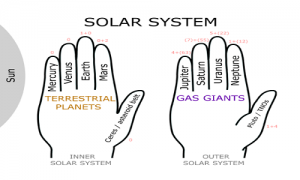Theopraxesis: Apparatus
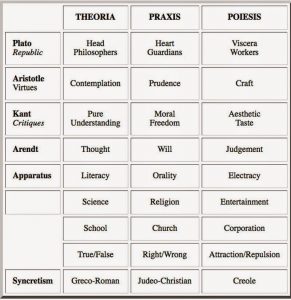
Apparatus Orientation. Gauguin’s visualized catechism exemplifies the orientation (EPS) organizing the Western Tradition. The table on the left charts the isotopic alignments of Capabilities across the microcosm/macrocosm, individual and collective registers. The Western Tradition in our heuretic curriculum is configured to make explicit this system of relationships among the virtues and the popcycle. The theme takes many forms, one of which is the legend of the Golden Apple Paris awarded to Aphrodite in the context with Athena and Hera regarding which power was most desirable. The three goddesses represent the three virtues: Athena (Wisdom and War); Hera (Social and Political Power); Aphrodite (Sexuality and Fertility). Plato addressed the relationship among these powers in the Republic, advising a hierarchy of Head (Rulers), Heart (Guardians), Viscera (Workers), in that order. Education of the individual begins with Aphrodite (sexual desire, appetites), and follows the power of attraction upwards through the virtues to Hera’s realm of social custom, and finally on th Athena’s wisdom, knowledge of the Forms (Ideas) themselves: Beauty as such.
–Kant’s Critiques retrieve Aristotle’s Theoria, Praxis, Poiesis, Circumscribing the limits of each Capability: Pure Reason, Practical Reason, Judgment of Taste, with the Third Critique constituting an innovation that marks the beginning of Electracy–the promotion of the faculty of imagination (poiesis, aesthetics) to equal status with the other two faculties, which up to that point it did not have. Kant proposed his own version of the catechism, relative to these three powers: What can I know? What should I do? What may I hope? This system informed Alan Kay’s design of computer interface when he worked at Xerox Park. Navigation of information space should engage all three of the virtues (theopraxesis in our terms). The three inputs: Keyboard (Symbol, highest order conceptual, linguistic) = Athena; Mouse (enactive doing) = Hera; Windows (image, icon) = Aphrodite.
–Nested levels (mise en abyme): The table helps clarify that, however dispersed our exposition may become, this system configuration is consistently present, governing the transformation from potential to actual.
- Collective: Apparatus–Paleo, Oral, Literate, Electrate
- Collective: Popcycle Institution–Family, Church, School, Corporation
- Individual: Capability–Language, Will, Thought, Imagination
- Individual: Theopraxesis (Mystory Wide Image generate hypothesis from disposition)
- Meta: Mandala, Game, Engine, Drive [not yet discussed]

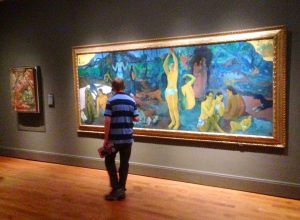 Capability. As these posts accumulate across an expanding set of categories, it is important to recall the focus of KE. Konsult learns the writing of the disaster in three dimensions: heuretics (invention), wide image (mystory), theopraxesis (capability). So far we have assumed some disaster addresses us, and devoted our attention to the heuretics of mystory, learning how to design an image of wide scope, source of our original hypothesis responding to disaster. Konsult takes up for electracy an ancient, even primordial drama: the striving to persist in one’s own being (to live), that Spinoza called Conatus, against the Overwhelming force of resistance, entropy, death. Heidegger characterized the drama as Riss, exploiting as was his craft German vocabulary, finding a term that means both Rift (split, break) and design (drawing). The drama of living derives from an irreducible opposition between Earth and World (nature and culture). Konsult is rift design (an assertion that must be developed elsewhere), taking up this enigmatic primordial experience of resistance encountered through living. Norbert Weiner, one of the inventors of cybernetics, defined life simply as anything that was negentropic, whether man or machine. We need to include in the drift of our posts a review of human capabilities, virtues, powers, the potentiality of egents which through education is realized in the service of well-being, thriving, living against disaster.
Capability. As these posts accumulate across an expanding set of categories, it is important to recall the focus of KE. Konsult learns the writing of the disaster in three dimensions: heuretics (invention), wide image (mystory), theopraxesis (capability). So far we have assumed some disaster addresses us, and devoted our attention to the heuretics of mystory, learning how to design an image of wide scope, source of our original hypothesis responding to disaster. Konsult takes up for electracy an ancient, even primordial drama: the striving to persist in one’s own being (to live), that Spinoza called Conatus, against the Overwhelming force of resistance, entropy, death. Heidegger characterized the drama as Riss, exploiting as was his craft German vocabulary, finding a term that means both Rift (split, break) and design (drawing). The drama of living derives from an irreducible opposition between Earth and World (nature and culture). Konsult is rift design (an assertion that must be developed elsewhere), taking up this enigmatic primordial experience of resistance encountered through living. Norbert Weiner, one of the inventors of cybernetics, defined life simply as anything that was negentropic, whether man or machine. We need to include in the drift of our posts a review of human capabilities, virtues, powers, the potentiality of egents which through education is realized in the service of well-being, thriving, living against disaster.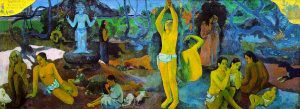
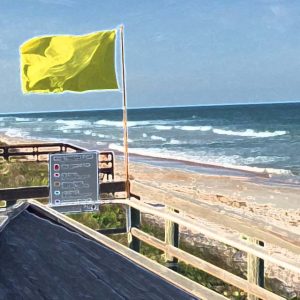 Everyday life is a dimension of the lifeworld addressed in the tradition of Arts & Letters disciplines dating back to Marx’s commentaries on the revolutions in France (Paris) beginning in the middle of the nineteenth century. The issue is central to electracy, in that the digital apparatus is associated with the rise of the industrial city. The primary institutional condition to be remedied through a new (image) metaphysics is the impoverishment of everyday life codified in the concepts of alienation, reification, objectification. Marx diagnosed the problem as due to the division of labor, and the new cultural and social environment created by the commodity form in market capitalism under bourgeois hegemony. Life in the industrial city became “uncanny,” due to a discontinuity, disjunction, between individual agency and collective events. An equivalent of the Unconscious opened within culture, a return of the repressed in which citizens suffered the consequences of their collective actions as if visited upon them by divine powers (commodity fetishism). “Routine” in this context is the habituation of daily ritual that must be dispersed by means of shock arts devices of estrangement (defamiliarization).
Everyday life is a dimension of the lifeworld addressed in the tradition of Arts & Letters disciplines dating back to Marx’s commentaries on the revolutions in France (Paris) beginning in the middle of the nineteenth century. The issue is central to electracy, in that the digital apparatus is associated with the rise of the industrial city. The primary institutional condition to be remedied through a new (image) metaphysics is the impoverishment of everyday life codified in the concepts of alienation, reification, objectification. Marx diagnosed the problem as due to the division of labor, and the new cultural and social environment created by the commodity form in market capitalism under bourgeois hegemony. Life in the industrial city became “uncanny,” due to a discontinuity, disjunction, between individual agency and collective events. An equivalent of the Unconscious opened within culture, a return of the repressed in which citizens suffered the consequences of their collective actions as if visited upon them by divine powers (commodity fetishism). “Routine” in this context is the habituation of daily ritual that must be dispersed by means of shock arts devices of estrangement (defamiliarization). Our first memories are visual ones. In memory life becomes a silent film. We all have in our minds an image which is the first, or one of the first, in our lives. That image is a sign, or to be exact, a linguistic sign. So if it is a linguistic sign it communicates or expresses something. I shall give you an example. The first image of my life is a white, transparent bind, which hangs–without moving, I believe–from a window which looks out on to a somewhat sad and dark lane. That blind terrifies me and fills me with anguish: not as something threatening and unpleasant but as something cosmic. In that blind the spirit of the middle-class house in Bologna where I was born is summed up and takes bodily form. Indeed the images which compete with the blind for chronological primacy are a room with an alcove (where my grandmother slept), heavy “proper” furniture, a carriage in the street which I wanted to climb into. These images are less painful than that of the blind, yet in them too there is concentrated that element of the cosmic which constitutes the petty bourgeois spirit of the world into which I was born. But if in the objects and things the images which have remained firmly in my memory (like those of an indelible dream) there is precipitated and concentrated the whole world of “memories,” which is recalled by those images in a single instant– if, that is to say, those object and those things are containers in which is stored a universe which I can extract and look at, then, at the same time, these objects and things are also something other than a container. . . . So their communication was essentially instructional. They taught me where I had been born, in what world I lived, and above all how to think about my birth and my life. Since it was a question of an unarticulated, fixed and incontrovertible pedagogic discourse, it could not be other–as we say today–than authoritarian and repressive. What that blind said to me and taught me did not admit (and does not admit) of rejoinders. No dialogue was possible or admissible with it, nor any act of self-education. That is why I believed that the whole world was the world which that blind taught me: that is to say, I thought that the whole world was “proper,” idealistic, sad and skeptical, a little vulgar–in short, petty bourgeois. (Pier Paolo Pasolini, Lutheran Letters, trans. Stuart Hood. Carcanet Press: New York, 1987).
Our first memories are visual ones. In memory life becomes a silent film. We all have in our minds an image which is the first, or one of the first, in our lives. That image is a sign, or to be exact, a linguistic sign. So if it is a linguistic sign it communicates or expresses something. I shall give you an example. The first image of my life is a white, transparent bind, which hangs–without moving, I believe–from a window which looks out on to a somewhat sad and dark lane. That blind terrifies me and fills me with anguish: not as something threatening and unpleasant but as something cosmic. In that blind the spirit of the middle-class house in Bologna where I was born is summed up and takes bodily form. Indeed the images which compete with the blind for chronological primacy are a room with an alcove (where my grandmother slept), heavy “proper” furniture, a carriage in the street which I wanted to climb into. These images are less painful than that of the blind, yet in them too there is concentrated that element of the cosmic which constitutes the petty bourgeois spirit of the world into which I was born. But if in the objects and things the images which have remained firmly in my memory (like those of an indelible dream) there is precipitated and concentrated the whole world of “memories,” which is recalled by those images in a single instant– if, that is to say, those object and those things are containers in which is stored a universe which I can extract and look at, then, at the same time, these objects and things are also something other than a container. . . . So their communication was essentially instructional. They taught me where I had been born, in what world I lived, and above all how to think about my birth and my life. Since it was a question of an unarticulated, fixed and incontrovertible pedagogic discourse, it could not be other–as we say today–than authoritarian and repressive. What that blind said to me and taught me did not admit (and does not admit) of rejoinders. No dialogue was possible or admissible with it, nor any act of self-education. That is why I believed that the whole world was the world which that blind taught me: that is to say, I thought that the whole world was “proper,” idealistic, sad and skeptical, a little vulgar–in short, petty bourgeois. (Pier Paolo Pasolini, Lutheran Letters, trans. Stuart Hood. Carcanet Press: New York, 1987).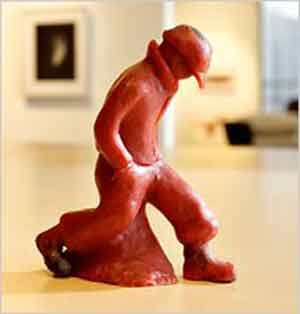
 2) Memory Palace. Konsult externalizes and augments mental modeling, including cognitive mapping, the capability of proprioception fundamental to orientation in space and time. A feature of apparatus shift is called innervation (facilitation)–referring to the neurological changes associated with brain/mind adaptation to new technologies. In Phaedrus (the first discourse on method of literacy), Socrates warned his pupil, Phaedrus (who came to his tutorial session with a cheat-sheet up his sleeve of the text he was supposed to memorize) that writing would destroy his memory. Pedagogy in the epoch of manuscript technology involved two interdependent practices: composition of a commonplace book (florilegia), organized by topics (topoi), consisting of methods for generating various genres along with archives of relevant information and resources;
2) Memory Palace. Konsult externalizes and augments mental modeling, including cognitive mapping, the capability of proprioception fundamental to orientation in space and time. A feature of apparatus shift is called innervation (facilitation)–referring to the neurological changes associated with brain/mind adaptation to new technologies. In Phaedrus (the first discourse on method of literacy), Socrates warned his pupil, Phaedrus (who came to his tutorial session with a cheat-sheet up his sleeve of the text he was supposed to memorize) that writing would destroy his memory. Pedagogy in the epoch of manuscript technology involved two interdependent practices: composition of a commonplace book (florilegia), organized by topics (topoi), consisting of methods for generating various genres along with archives of relevant information and resources;  –GPS/EPS. The comparable warning today is that
–GPS/EPS. The comparable warning today is that 